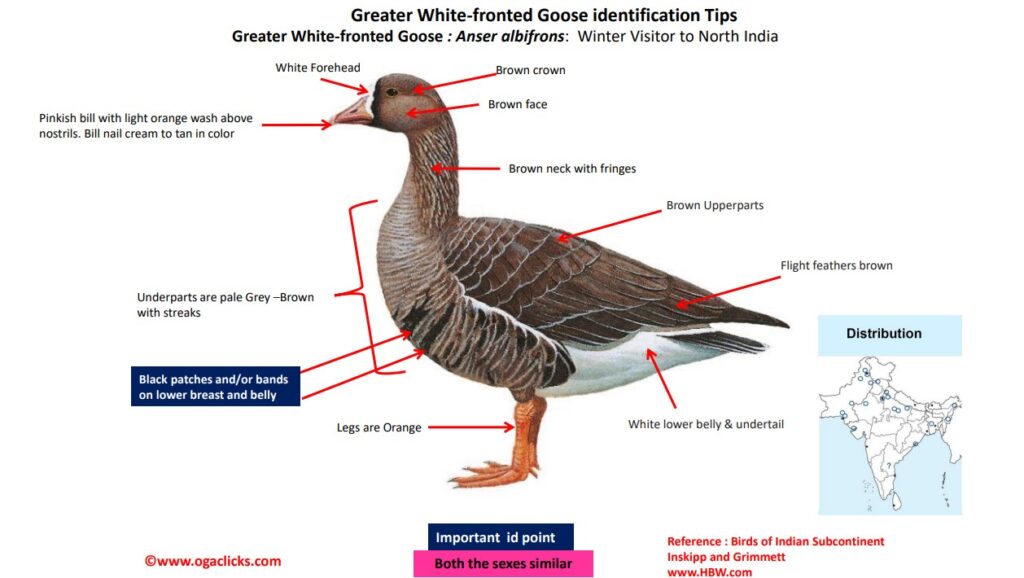
Greater White-fronted Goose Anser albifrons
Etymology:
- Anser : Latin word for Goose
- Albifrons: Latin word albus –white; frons – forehead, front. {white fronted}
Vernacular Names: Guj: Shvetabhal gaj-hamsa, Shwetbhal hans
Distribution in India: Winter visitor in North, West & North East India.
Description: Size of 65–86 cm; weight of male 2050–3600 g, weight of female 1800–2900 g; wingspan of 130–165 cm. It is a larger goose, paler and with less white on forehead. It has a broad white band at front of head, browner coloration, black barring on belly and orange legs and feet. It has more upperwing in flight, darker back and rump and darker base to tail. The juvenile lacks white frontal band and barring on belly, browner coloration, darker feathering at base of bill, darker tip to bill, orange legs and feet.
Habitat: It breeds in open tundra near marshes, boggy mires, lakes, pools and rivers, near coast as well as inland. In winters it is found in open country, on steppe and increasingly on farmland, or in marshy habitats.
Food habits: It eats roots, leaves, stems and seeds of various plants, herbs, berries, grasses and sedges, grain, potatoes and sprouting cereals in winter.
Breeding habits: They breed in May/Jun. They are monogamous and forms long-term pair-bonds. They build shallow nest of vegetation in grass or dwarf shrub heath, often on raised hummocks or on slopes that are snow-free sparsely lined with down and feathers. They lay a clutch of 5–6 eggs. The eggs are white to creamy-white eggs. The incubation period is 22–28 days, done by female alone, guarded by male. The chicks have brownish-olive down above, pale grey below, with dark eyestripe. the fledging period is 38–45 days.